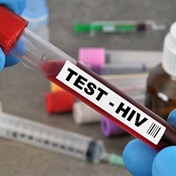Scientists, stymied for decades by the complexity of the human immunodeficiency virus, are making progress on several fronts in the search for a cure, a leading medical research conference was told in Seattle.
Promising tactics range from flushing hidden HIV from cells to changing out a person's own immune system cells, making them resistant to HIV and then putting them back into the patient's body.
A major stumbling block is the fact that HIV lies low in reservoirs of latent infection that even powerful drugs cannot reach, scientists told the Conference on Retroviruses and Opportunistic Infections, one of the world's largest scientific meetings on HIV/Aids.
"We need to get the virus to come out of the latent state, and then rely on the immune system or some other treatment to kill the virus," said Dr Kevin De Cock, director of the Centre for Global Health at the US Centres for Disease Control and Prevention.
HIV no longer a death sentence
HIV, which surfaced more than 30 years ago, infects more than 33 million people worldwide. Thanks to prevention measures, tests that detect HIV early and new antiretroviral drugs, infection is no longer a death sentence.
Still, questions of cost, side effects, drug resistance and ultimate life span, make lifelong use of antiviral drugs a less-than-ideal solution.
The International Aids Society last year formally added the aim of finding a cure to its HIV strategy of prevention, treatment and care.
Early human trials of vaccines designed to prevent or treat infection with the difficult to target virus have proved disappointing. HIV is a "provirus" that is integrated into the DNA of a host cell, where it can remain latent or eventually reactivate.
Vaccines eliminate the surface of the virus
"It has proven to be an incredibly formidable challenge to develop a vaccine," said John Coffin, professor of molecular biology at Tufts University in Boston. "In recent years the pendulum is swinging back."
Scientific advances in molecular engineering are allowing researchers to delve more deeply into the mechanism of HIV.
"Vaccines work by recognising the surface of the virus and eliminating it," said Dr Dennis Burton, professor of immunology and microbial science at the Scripps Research Institute in La Jolla, California. "HIV is a highly evolved virus that has developed a surface incorporating features to avoid antibody responses," including instability.
He presented research showing that "broadly neutralising antibodies" can be designed to recognise and penetrate HIV, giving researchers new vaccine targets.
Cancer drug can disrupt HIV infection
Merck & Co presented data showing for the first time that its cancer drug Zolinza, also known as vorinostat, can disrupt latent HIV infection.
"Once you have a validated approach you can really go back to the drawing board in the labs and design molecules more suited to therapy," said Daria Hazuda, vice president for infectious disease discovery at Merck.
She said the company is currently exploring how to design future studies.
"The sobering fact is that only one competent provirus in one tissue could re-seed the entire infection," said Dr John Mellors, chief of the infectious disease division at the University of Pittsburgh.
HIV is constantly mutating
Phillip Gregory, chief scientific officer at Sangamo BioSciences, said he was not "fanatically optimistic about priming the immune system to fight HIV" with a preventive vaccine.
He explained that because HIV is a reverse transcriptase virus, it is constantly mutating, making it very difficult for the body's immune system to keep up. Vaccines induce the production of antibodies that recognise and bind to very specific viral surface molecules, but the HIV molecules end up with a variety of subtle molecular differences on their surface.
"Eradication is a very tough theoretical sell," he said. "What's going to work is getting to the point that we could reasonably expect the immune system to get it totally under control."
Sangamo is conducting two mid-stage trials of its gene therapy in which CD4 cells are removed, manipulated to knock out the CCR5 gene used by HIV to infect cells and then replaced.
Aim is to prime the immune system
"The change is permanent. Those cells and their progeny will go on to carry that genetic change," said Geoffrey Nichol, head of research and development at Sangamo.
An earlier study of a single infusion of the gene therapy in six HIV-infected patients showed mixed results, eliminating the virus in one patient with a naturally occurring gene mutation.
In the newer trials, according to Sangamo, patients will first be treated with an agent that reduces the number of lymphocytes in the bone marrow. The aim is to prime the immune system to take up more of the genetically modified CD4 cells when they are returned to the patient.
(Deena Beasley, Reuters Health, March 2012)
Read more:




 Publications
Publications
 Partners
Partners














